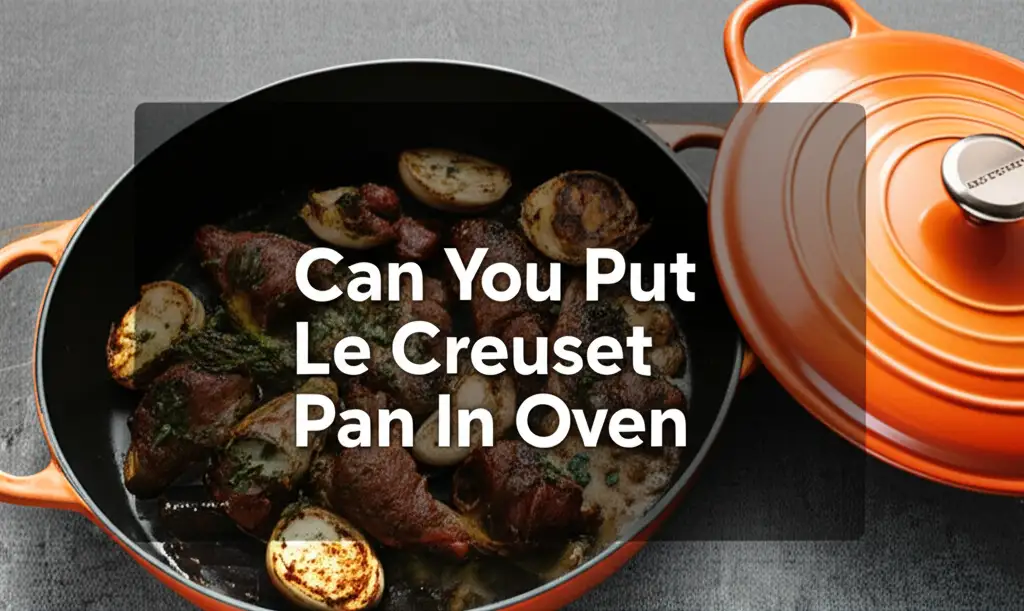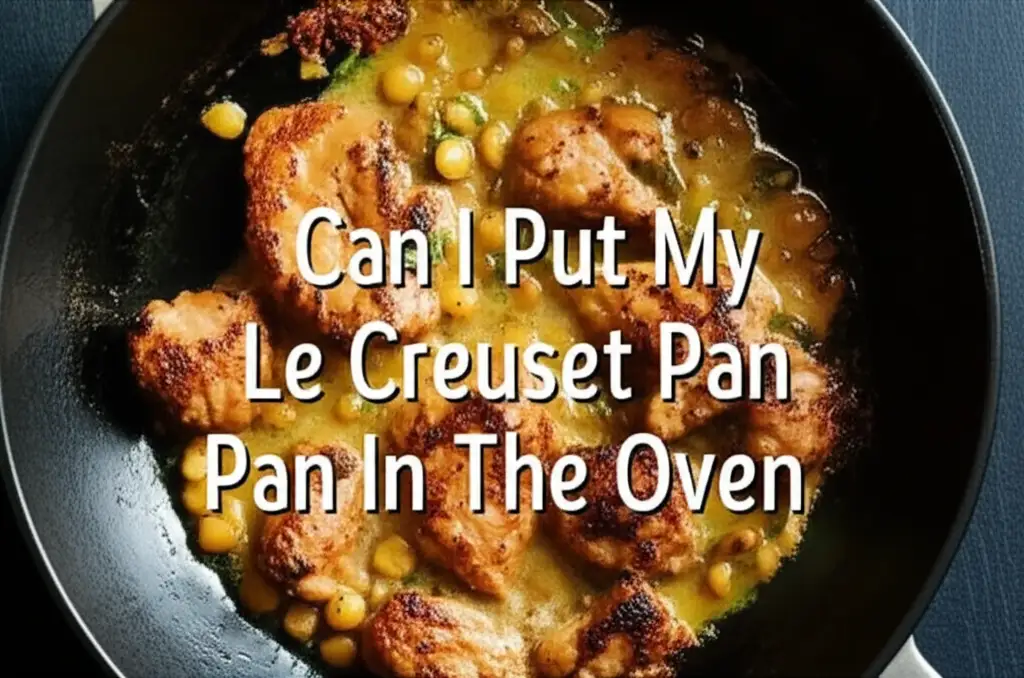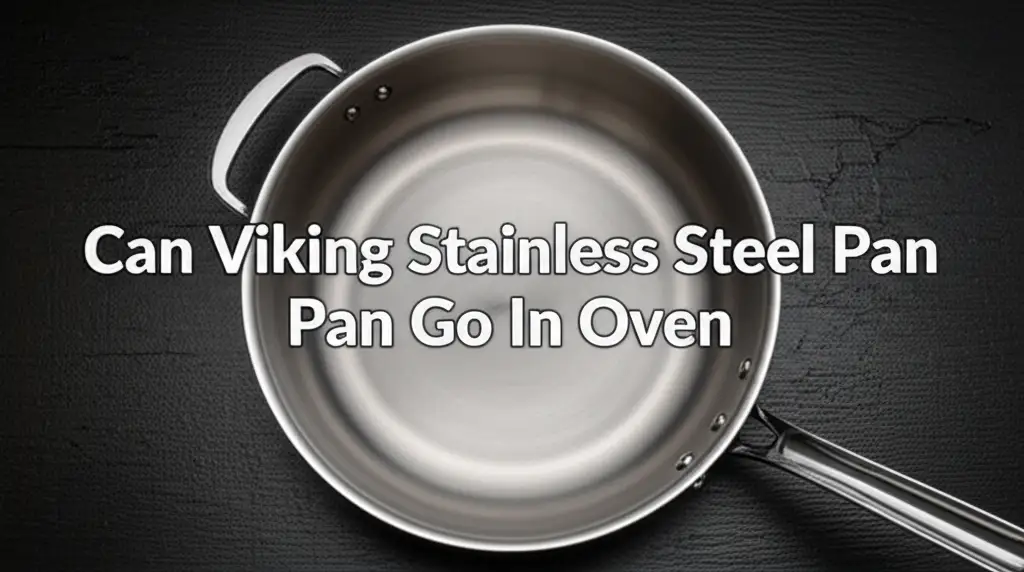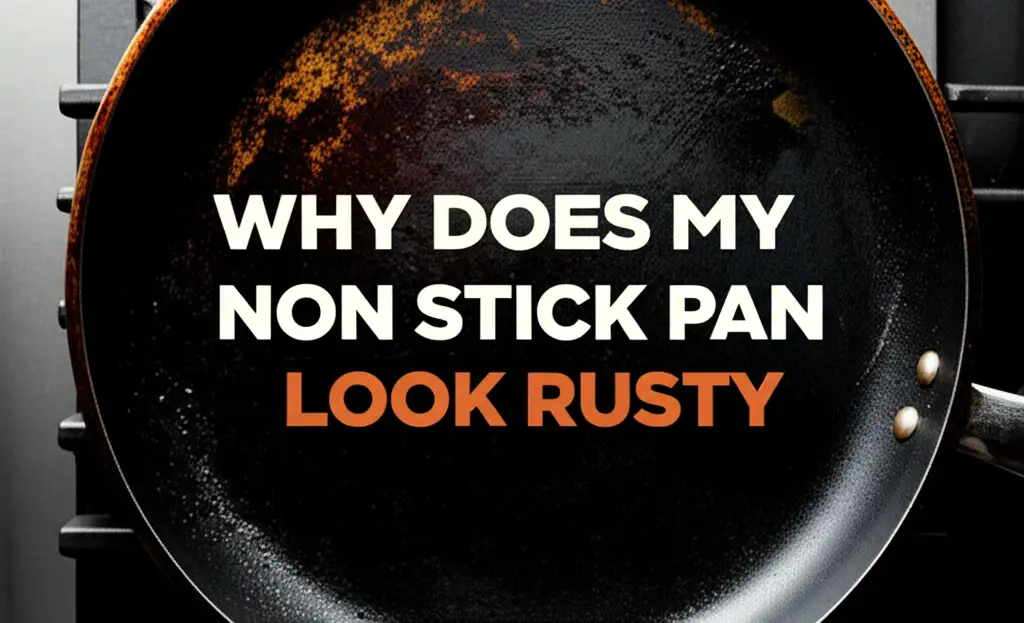· Katria Melrose · Cookware Care · 16 min read
Can You Put Le Creuset Pan In Oven

Unlock Your Oven’s Potential: Can You Put Le Creuset Pan In Oven?
Many home cooks dream of owning a Le Creuset pan. Its vibrant colors and durable build make it a kitchen icon. But a common question often arises: Can you put Le Creuset pan in oven? This is a crucial query for anyone looking to maximize their cookware’s potential.
You invest in quality cookware for its versatility. Le Creuset is no exception. Understanding its oven-safe capabilities opens up a world of cooking possibilities. From slow-cooked stews to crispy roasted chicken, the oven is where this pan truly shines. This article will explore the specific details of using your Le Creuset pan in the oven. We will cover temperature limits, handle types, care instructions, and common mistakes to avoid. Prepare to use your Le Creuset with full confidence.
Takeaway
- Le Creuset enameled cast iron cookware is generally oven-safe.
- Always check specific temperature limits for different lid knobs and handles.
- Avoid sudden temperature changes to prevent thermal shock.
- Clean your Le Creuset properly after oven use to maintain its quality.
Yes, you can absolutely put a Le Creuset pan in the oven. Le Creuset cookware, especially its enameled cast iron pieces, is designed for oven use. This versatility allows you to seamlessly transition your cooking from stovetop to oven. However, specific components like phenolic knobs or certain handles have temperature limits. Always consult your pan’s user manual for precise guidance.
The Truth About Le Creuset and Oven Use
Le Creuset cookware is famous for its exceptional performance. A key part of this performance comes from its ability to withstand high heat. The core material, enameled cast iron, handles oven temperatures very well. This makes it perfect for a wide range of recipes. You can brown meat on the stovetop and then finish it in the oven.
Enameled cast iron heats evenly. It also retains heat for a long time. This means your food cooks consistently from all sides. When you place a Le Creuset pan in the oven, it creates a stable cooking environment. This is ideal for braising, roasting, and baking. The enamel coating also prevents food from sticking easily. This ensures a better cooking and cleaning experience. Many dishes truly benefit from this slow, even heat.
Le Creuset designs its products for maximum versatility. They intend for their pans to move between cooking surfaces. This includes gas, electric, induction stovetops, and the oven. This design philosophy makes Le Creuset a staple in many kitchens. I personally find this feature incredibly useful for complex recipes. It streamlines the cooking process, allowing flavors to develop deeply.
Consider the entire construction of your Le Creuset pan. The robust cast iron body is built to last. The vitreous enamel finish protects the cast iron and prevents rusting. It also makes the pan non-reactive with acidic foods. This durable construction is why Le Creuset pans are a significant investment. Their ability to go from stovetop to oven justifies their premium status.
Understanding Temperature Limits for Le Creuset Oven Safety
Knowing the exact temperature limits for your Le Creuset pan is important. While the enameled cast iron body is very durable, certain parts have lower tolerance. Most Le Creuset enameled cast iron cookware can safely go into an oven up to 500°F (260°C). This temperature covers almost all standard baking and roasting needs.
However, the lid knob is often the part that determines the maximum temperature. Older Le Creuset models and some current ones feature a black phenolic knob. This type of knob typically has a lower temperature limit. For these knobs, the safe oven temperature is usually 375°F (190°C) or 480°F (240°C), depending on the specific model and manufacturing year. Always check your pan’s manual or the Le Creuset website for precise information. Newer models often come with a more heat-resistant black composite knob, which typically withstands up to 500°F (260°C).
Many Le Creuset pans also come with stainless steel knobs. These metal knobs are incredibly robust. They can withstand temperatures up to 500°F (260°C), matching the pan’s body. If you plan to cook at very high temperatures, consider replacing a phenolic knob with a stainless steel one. Le Creuset sells replacement knobs separately. This is a simple upgrade for extended oven use.
Broiler use is another consideration. While the pan body itself can handle direct broiler heat, the enamel coating might be susceptible to damage if placed too close. I always advise caution with broilers. Keep the pan at a safe distance from the heating element. Direct, intense, top-down heat can sometimes cause the enamel to dull or crack over time. If you use the broiler, keep a close eye on your pan and food.
Always refer to the specific instructions that came with your Le Creuset product. Different lines or special editions might have unique guidelines. Ignoring these limits can shorten your pan’s lifespan. It can also void its warranty. Protecting your investment means understanding and respecting its boundaries.
Handle with Care: Le Creuset Pan Handles in the Oven
Le Creuset pans feature various handle types. Each handle material has its own set of oven safety guidelines. Understanding these differences is key to safe and effective cooking. Most Le Creuset cookware comes with either integrated cast iron handles or phenolic handles. Some specialized pieces might have stainless steel or even wooden handles.
Integrated cast iron handles are part of the pan’s body. These handles are as oven-safe as the pan itself. They can withstand temperatures up to 500°F (260°C). This makes them incredibly versatile for oven cooking. However, remember that these handles get extremely hot in the oven. Always use oven mitts or a thick kitchen towel when handling the pan. I have personally experienced the surprise of a very hot handle!
Phenolic handles are typically found on saucepans and skillets. These are the black, sturdy handles that look like hard plastic. Like the phenolic lid knobs, these handles have specific temperature limits. Older phenolic handles might be safe only up to 375°F (190°C). Newer versions often tolerate up to 480°F (240°C) or 500°F (260°C). It is crucial to verify the exact temperature rating for your specific model. Exceeding this limit can cause the handle to melt or become damaged.
Some special Le Creuset pieces, like certain grill pans or casseroles, may feature stainless steel handles. These handles are generally very heat-resistant. They can go into the oven at temperatures up to 500°F (260°C). Stainless steel handles also conduct heat, so they will be hot. Always use protective handwear when moving the pan from the oven.
A very small number of Le Creuset products might include wooden handles. Wooden handles are not oven-safe. Wood can crack, warp, or even burn at oven temperatures. If your Le Creuset pan has a wooden handle, it is designed for stovetop use only. You cannot put it in the oven. Always remove any detachable wooden parts before placing the pan in a hot oven. I’ve seen unfortunate accidents with wooden handles, so this point is vital.
Always double-check the specific product information for your Le Creuset piece. This ensures you use your pan safely and correctly. Knowing your handle type helps you avoid damage and ensures longevity.
Maximizing Your Le Creuset’s Oven Performance
Using your Le Creuset pan in the oven is straightforward, but a few practices enhance your cooking. These tips help you get the best results from your enameled cast iron cookware. They also help preserve its quality over time. I rely on these methods every time I cook with my Le Creuset.
First, preheating your Le Creuset pan is often beneficial. Whether on the stovetop or in the oven, a preheated pan provides an even cooking surface. For oven use, place the empty pan in the cold oven as it preheats. This allows the pan to gradually come up to temperature. It prevents thermal shock, which can damage the enamel over time. A hot pan ensures consistent browning and cooking from the start.
When roasting or baking, consider using the lid. Le Creuset lids create a sealed environment. This traps moisture and heat inside the pan. It is perfect for braising meats or baking bread. The lid helps tenderize food and prevents it from drying out. For dishes that need a crispy finish, you can remove the lid for the last part of cooking.
Avoid placing an empty, cold Le Creuset pan directly into a very hot oven. This sudden change in temperature can stress the enamel. It might lead to cracks or chips. Similarly, do not place a hot pan directly into cold water. Always allow the pan to cool down gradually on a trivet or cooling rack. This simple step protects your pan from damage.
For even heat distribution, place your Le Creuset pan on the center rack of the oven. This ensures consistent exposure to heat from all sides. If you are baking something with a lid, ensure there is enough clearance from the top heating element. This prevents accidental scorching of the lid knob. Proper positioning helps your food cook perfectly.
Using suitable utensils is also important. While the enamel is durable, metal utensils can scratch or chip it over time. I recommend silicone, wood, or heat-resistant plastic utensils when cooking with your Le Creuset in the oven. These materials are gentle on the enamel. They help maintain your pan’s pristine appearance and cooking surface.
Cleaning Your Le Creuset After Oven Use: Best Practices
Cleaning your Le Creuset pan after oven use is essential for its longevity. Food residue, especially after high-temperature roasting or baking, can sometimes stick. Proper cleaning ensures your pan remains in excellent condition. This section outlines the best practices for post-oven care.
First, always allow your Le Creuset pan to cool down completely before cleaning. Placing a hot pan under cold water can cause thermal shock. This can lead to cracks or damage to the enamel. Let it sit on a heat-safe surface until it reaches room temperature. Patience here saves your pan.
Once cooled, fill the pan with warm water. Add a few drops of dish soap. Let it soak for 15-20 minutes, or even longer for stubborn, baked-on food. Soaking helps loosen any stuck-on bits. This makes cleaning much easier. Avoid using abrasive cleaners or harsh scouring pads. These can scratch the enamel surface.
For persistent residue, use a nylon scrub brush or a soft sponge. Gentle scrubbing should remove most stuck-on food. If you encounter very tough stains or burnt marks, consider using Le Creuset’s specialized cleaner. Alternatively, a paste of baking soda and a little water can work wonders. Apply the paste, let it sit for a while, then gently scrub. For more detailed cleaning advice on tough stains, you can learn how to get burn marks off Le Creuset pan.
Don’t forget to clean the outside of your pan too. Oven spills and grease can accumulate on the exterior. Use warm, soapy water and a soft cloth for the exterior. For tips on maintaining the outside, check out how to clean outside of Le Creuset cookware. This keeps your pan looking good as new.
After washing, always dry your Le Creuset pan thoroughly. Water spots can sometimes leave mineral deposits. Also, completely drying prevents rust on any exposed cast iron rims or chips. Store your pan in a dry place. Placing a paper towel or cloth between stacked pans can also prevent scratches. For cleaning specific types of Le Creuset, like grill pans, there are unique methods. Discover how to clean Le Creuset grill pan for specialized care.
Common Mistakes to Avoid When Using Le Creuset in the Oven
While Le Creuset pans are durable, specific errors can shorten their lifespan. Avoiding these common mistakes ensures your pan lasts for generations. Understanding what not to do is as important as knowing what to do. I have learned these lessons over time and they are crucial for protecting your investment.
One major mistake is sudden temperature changes, also known as thermal shock. Never transfer a very hot Le Creuset pan directly to a cold surface or run cold water over it. The extreme temperature difference can cause the enamel to crack or chip. Always let the pan cool down naturally on a trivet or heat-safe surface before washing. Similarly, avoid putting a very cold pan directly into a preheated, very hot oven. Gradually preheat the pan with the oven.
Using metal utensils is another common pitfall. While the enamel is tough, sharp metal can scratch its surface. Over time, these scratches can worsen and even lead to chipping. Always use silicone, wood, or heat-resistant plastic utensils, especially when stirring or serving in the pan. This protects the cooking surface and keeps it smooth.
Overfilling your pan can also cause issues. When baking or braising, leave enough room for bubbling or rising. Overfilling can lead to spills in your oven, creating a messy clean-up. It can also cause food to bake onto the rim, making it harder to clean the pan itself.
Neglecting to check your lid knob’s temperature limit is a significant error. As discussed earlier, phenolic knobs have lower heat tolerances than stainless steel ones. Using a phenolic knob above its rated temperature can cause it to melt, crack, or become damaged. Always confirm the limit for your specific knob. If you frequently cook at high oven temperatures, consider upgrading to a metal knob.
Lastly, do not use very high heat settings when the pan is empty. Heating an empty Le Creuset pan on high heat, especially on a stovetop before transferring to the oven, can damage the enamel. The pan can overheat quickly. Always add some liquid, oil, or food before applying high heat. This helps distribute the heat and protects the enamel from scorching.
Beyond Roasting: Creative Uses for Your Le Creuset in the Oven
Le Creuset pans are incredibly versatile in the oven, going far beyond basic roasting. Their excellent heat retention and even cooking capabilities make them ideal for a wide array of culinary endeavors. If you’re looking to explore new recipes, your Le Creuset pan is a fantastic tool.
One popular use is baking bread. The heavy cast iron Dutch oven acts like a professional bread oven. It creates a steamy environment that gives bread a perfect crust and tender interior. Placing the dough in a preheated Le Creuset Dutch oven, with the lid on, traps steam. This helps the bread rise beautifully and develop a crisp, golden crust. After a certain time, removing the lid allows the crust to brown further. Many bakers swear by this method for artisan loaves.
Slow cooking is another area where Le Creuset excels in the oven. For hearty stews, casseroles, or braised meats, the consistent, gentle heat of the oven is perfect. You can sear ingredients on the stovetop and then transfer the entire pan to the oven for hours. The long, slow cooking tenderizes tough cuts of meat and melds flavors beautifully. The pan retains moisture, ensuring your dishes stay juicy and flavorful. This method truly brings out the depth in comfort food.
You can also use your Le Creuset for baking desserts. Think about deep-dish fruit crisps, cobblers, or even cakes. The even heat ensures your desserts bake through without burning the edges. The pan also presents beautifully on the table directly from the oven. It keeps desserts warm for a longer time, which is perfect for gatherings. I love making apple crisp in mine during the fall.
From savory gratins to delicate soufflés, the Le Creuset can handle it all. Its ability to go from stovetop to oven to table makes it a truly multifunctional piece of cookware. Experiment with different recipes. You will quickly discover the endless possibilities that your Le Creuset pan offers in the oven. This versatility makes it an indispensable tool in any kitchen.
FAQ Section
Q1: Can Le Creuset go under the broiler?
Le Creuset pans can generally withstand broiler temperatures. However, use caution. Place the pan on a lower rack, not too close to the broiler element. Intense, direct heat from a broiler can potentially dull the enamel’s finish over time. Also, ensure any phenolic knobs or handles are removed or rated for high heat before broiling.
Q2: What is the maximum oven temperature for Le Creuset?
Most Le Creuset enameled cast iron cookware is safe for oven temperatures up to 500°F (260°C). This applies to the cast iron body itself. Always check the specific temperature limit for your lid knob. Phenolic knobs might have lower limits, often 375°F (190°C) or 480°F (240°C), while stainless steel knobs are safe to 500°F (260°C).
Q3: Are Le Creuset lids oven safe?
Yes, Le Creuset lids are oven safe. Their temperature limit depends on the material of the knob. Lids with standard phenolic knobs are typically safe up to 375°F (190°C) or 480°F (240°C), while lids with stainless steel knobs are safe up to 500°F (260°C). Always ensure the knob’s rating matches your cooking temperature.
Q4: Can I use metal utensils in my Le Creuset in the oven?
It is generally recommended to avoid metal utensils when cooking with Le Creuset. Metal can scratch or chip the enamel surface, especially over time. Use silicone, wood, or heat-resistant plastic utensils instead. These materials are gentle on the enamel and help preserve your pan’s condition.
Q5: How do I prevent thermal shock with Le Creuset?
Prevent thermal shock by avoiding sudden temperature changes. Do not place a very hot Le Creuset pan into cold water. Let it cool naturally to room temperature first. Similarly, do not put a very cold pan directly into a preheated, very hot oven. Allow the pan to warm up gradually with the oven.
Q6: Can I put a Le Creuset with a wooden handle in the oven?
No, Le Creuset pans with wooden handles are not oven-safe. Wood can crack, warp, or even burn at oven temperatures. If your specific Le Creuset pan has a wooden handle, it is designed for stovetop use only. Always ensure no wooden components are attached before placing your pan in the oven.
Conclusion
Understanding your Le Creuset pan’s capabilities in the oven makes it an even more valuable kitchen tool. You can confidently put your Le Creuset pan in the oven for a wide array of cooking tasks. This versatility allows you to braise, roast, bake, and slow cook with ease. It is a true workhorse, transitioning seamlessly from stovetop to oven.
Always remember to check the specific temperature limits for your pan’s lid knobs and handles. This small step protects your investment and ensures safe cooking. By following proper care and cleaning routines, your Le Creuset pan will provide excellent service for many years. Now, go ahead and explore new culinary adventures with your Le Creuset. Unlock its full potential in your kitchen.





